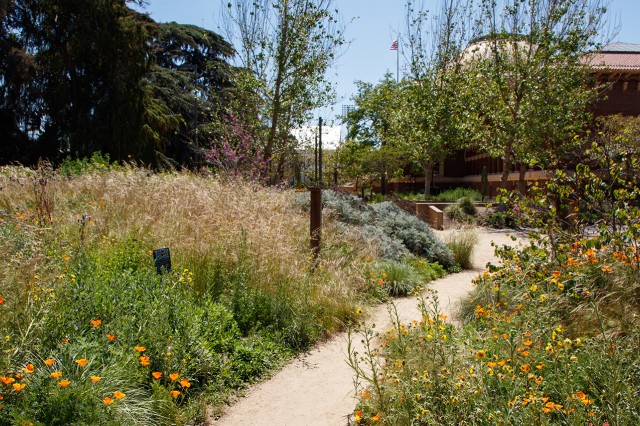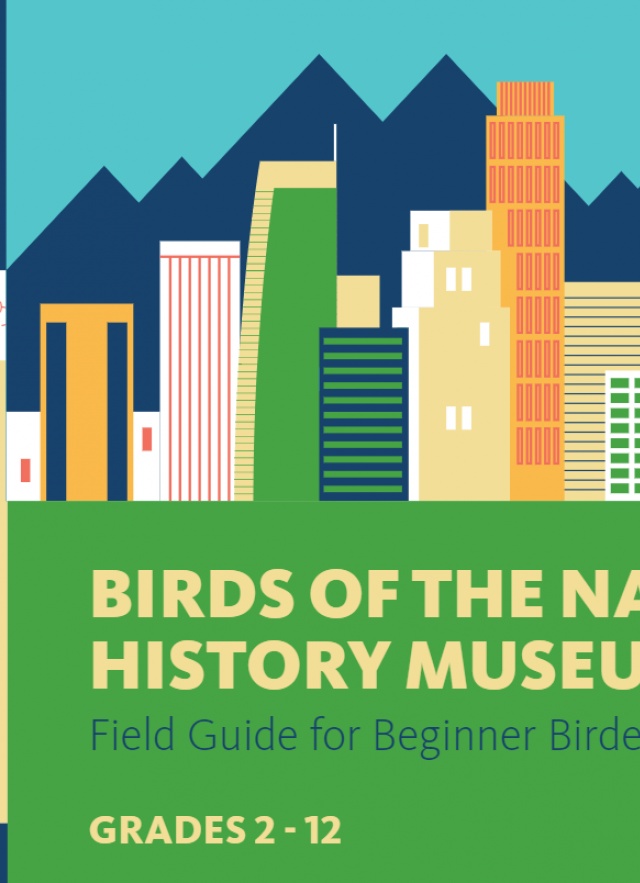
Learn More
This field guide was designed to introduce you to the wonderful world of birds! How many birds will you spot today?

Look up, look down – birds are all around! The Nature Gardens at the Natural History Museum feature over 600 plants, including California native plants, that attract birds and other wildlife. The gardens provide food and habitat for birds who are an important part of our ecosystem. How many birds will you spot today?
A field guide is a book that assists people in identifying things in nature, such as animals and plants. This field guide was designed to introduce you to the wonderful world of birds! This guide will teach you how to observe birds, introduce you to words associated with birds, and share some interesting facts about our feathered friends. To help beginners, some of the pages have been organized by where you might find birds. For example, our first section focuses on birds that are often seen on the ground or in the water.
This guide provides spaces for you to record your observations and illustrations. Use this field guide to keep notes and document what you see as you observe birds in the Nature Gardens (or in your schoolyard or neighborhood). Please keep in mind that birds come and go. Weather and seasonal migration may affect the number and variety of our feathery visitors - you may see many (or only a few!) birds that are featured in this guide depending on the time of year. Looking to see birds year-round? You can view bird specimens up close in the Nature Lab or the Hall of Birds.
Crosscutting Concepts: Patterns
LS1.B